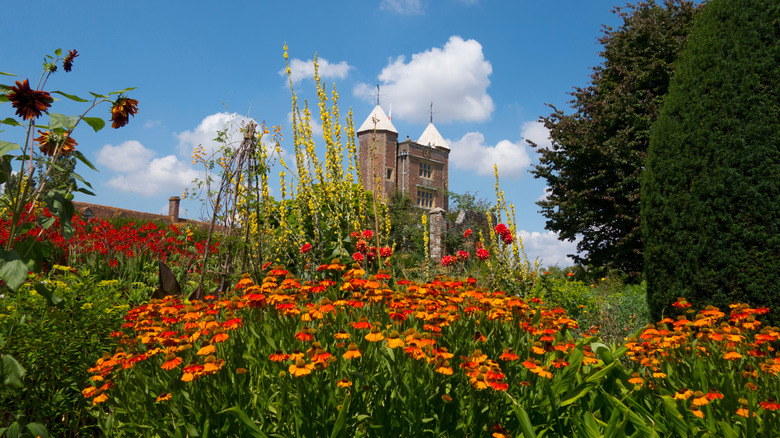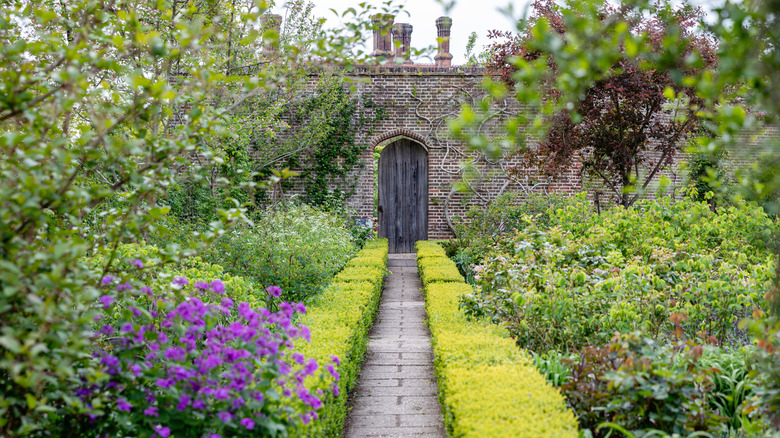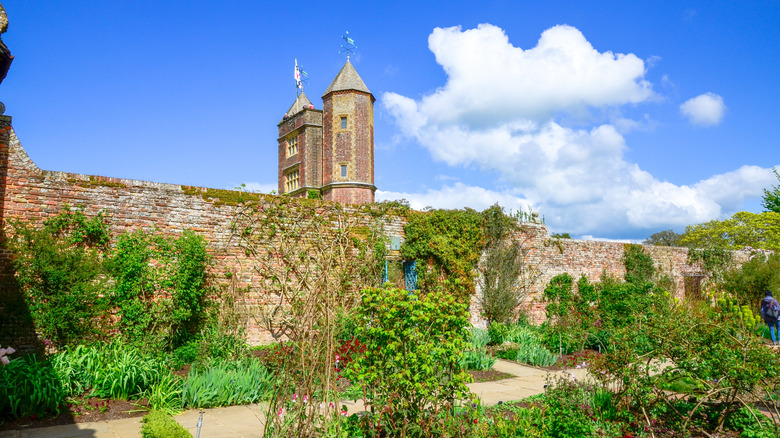One Of Rick Steves' Favorite Botanical Gardens In Europe Is Hidden In A Stunning English Castle
One of travel expert Rick Steves' tricks to planning your trip to Europe is to start the journey in England, where the language barrier is minimal and the culture may feel more familiar. Many travelers begin in London because of its international airport access and wealth of iconic sights. But the English countryside offers incredible towns and old castles that are less crowded and provide the kind of idyllic scenery you won't find in the big city — and many of them are an easy day trip from London. Just over an hour by train from The Big Smoke is St. Andrews Lakes, a great option for a perfect day trip in England's green outdoors. A bit farther southeast, just under 2 hours by train and bus from London's Charing Cross station, is Sissinghurst Castle, which holds the distinction of having one of Steves' favorite European gardens.
Steves described the Sissinghurst Castle Gardens on his website as "the quintessential English 'cottage' garden." He notes, "There is always something blooming here, but the best show is in June, when the famous White Garden bursts with scented roses." The White Garden is one of several sections of the gardens, which are referred to as open-air "rooms," each organized around a particular theme.
Naturally, the White Garden is arranged around a white palette, made up of white irises, dahlias, royal lilies, and almond trees, among others. The White Garden is a testament to the ingenuity of its creator, the writer Vita Sackville-West, whose decision to create a garden without the typical bright colors was quite exceptional for its time in the 1950s. But it's only one example of the stunning arrangements Sackville-West designed astride the historic manor.
How Vita Sackville-West transformed Sissinghurst Castle into splendid gardens
Long before the castle became the botanical project of Vita Sackville-West, it had many lives, dating back to the 16th century, when it was built as a Tudor home. The building's tower and South Cottage still stand as vestiges of this early manor. Much of it was destroyed, however, when it was used as a prison for French sailors in the mid-18th century. Kept in inhumane conditions, the prisoners burned down the building. They also lent it the "castle" name, a loose translation of "château," as the prisoners referred to it. Following the building's restoration, it was subsequently used as a poorhouse and later a farm estate before landing, in a state of disrepair, in the hands of Sackville-West and her husband, Harold Nicolson.
When Sackville-West acquired Sissinghurst in 1930, there were no such esteemed gardens. The green space of the estate was mainly used for vegetable-growing and was littered with rubble. To transform the area into beautiful gardens, Nicolson designed the garden's enclosures, while Sackville-West handled the planting and floral selection.
Sackville-West arranged many of her gardens around color. Writing about them in her weekly gardening column for the Observer (now part of The Guardian), she said, "And if you think that one colour would be monotonous, you can have a two- or even a three-colour, provided the colours are happily married." The Cottage Garden, for example, is defined by fiery hues of red, orange, and gold, while the Purple Border reflects its namesake.
What to see at Sissinghurst Castle in all seasons
When Vita Sackville-West and Harold Nicolson first opened the garden to the public, they charged each visitor an admission fee of one shilling (the former British currency). Today, tickets cost a bit more, though families and children receive a discount and can buy tickets at reception year-round, with hours varying by season. Admission grants access to the more than 400-acre estate, where you can explore the gardens, the old moat, and parts of the buildings.
Though the Rose and White Gardens are most vivid in June, every season offers its own colorful sights. In summer, the Cottage Garden bursts with color, and towards the end of summer is one of the best times to visit England for optimal weather. Come in the fall to see the asters bloom and the red fruits of magnolias. Even in winter, the gardens remain active — gardeners can be seen busying themselves with rose pruning, and early buds dot the enclosures with splashes of color.
In the castle itself, you can climb up to the 16th-century brick tower, where Sackville-West wrote while surrounded by views of her gardens. The oak desk in this room is her original writing desk. Another area open to the public is known as the "Big Room," which often hosts exhibitions. Finally, the Oast Houses, a traditional architectural style of the Kent countryside, host rotating exhibitions and lectures.


